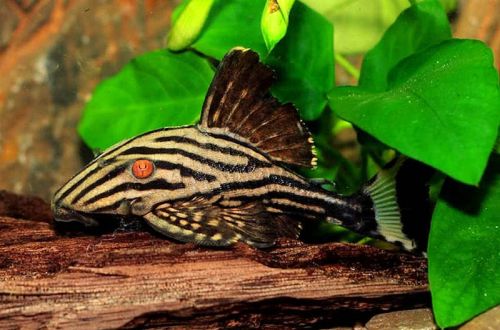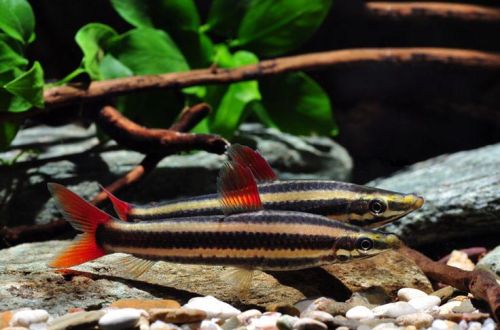
royal panak
The royal panak, scientific name Panaque nigrolineatus, belongs to the family Loricariidae (Mail or Loricari catfish). Large unpretentious and beautiful fish with a difficult character. Given all the features, the content will not cause much trouble even for a novice aquarist.

Contents
Habitat
The catfish is native to South America. It is found in the Orinoco basin and some tributaries of the Amazon in Venezuela, Colombia and Brazil. Inhabits both the main channels of rivers and small channels.
Brief information:
- The volume of the aquarium – from 200 liters.
- Temperature – 24-28°C
- Value pH — 6.0–7.5
- Water hardness – soft or medium hard (5-15 dGH)
- Substrate type – any dark
- Lighting – subdued or moderate
- Brackish water – no
- Water movement – light or moderate
- The size of the fish is up to 43 cm.
- Nutrition – any sinking food with herbal supplements
- Temperament – quarrelsome with bottom species
- Keeping alone or in large groups
Description
Adults reach a length of up to 43 cm. In the first year and a half they grow rapidly, reaching 20 or more centimeters. Then growth slows down and they will acquire their maximum size only by 7–10 years.
It is a closely related species in relation to Plecostomus, having a similar appearance with them. The whole body is covered with bony plates, the covers are hard with numerous spines. The first rays of the fins are sharp spikes. The body pattern consists of alternating brown and light cream or white stripes. The eyes are red.
The mouth is a suction cup, with which the fish scrapes off the nutrient layer from the surface of snags, fruits, leaves and plant trunks.
Food
It is considered an omnivorous species. Accepts most popular dry sinking foods (flakes, pellets). It often feeds on uneaten food leftovers from other inhabitants of the aquarium. An important element in the diet are herbal supplements. It can be both special feeds and lettuce, spinach, zucchini and other green vegetables. Before serving, it is recommended to douse them with boiling water or pre-freeze them to make plant fibers softer.
Maintenance and care
The optimal volume of the aquarium for one adult catfish starts from 200 liters. In the design, it is necessary to provide places for shelters from natural or artificial decorative elements. Any shelter, for example, a cave, a grotto, must be transparent and large enough. A common problem is catfish getting stuck.
Tends to damage living plants. Either floating varieties or fast-growing varieties with a strong root system are recommended.
Royal panaki are unpretentious and hardy, perfectly adapt to various conditions. Ways to live in a relatively wide range of temperatures and values of hydrochemical parameters.
Aquarium maintenance is standard and includes weekly replacement of part of the water with fresh water, removal of accumulated organic waste and equipment maintenance.
Behavior and Compatibility
In nature, they often live in large groups in flocks of several tens and even hundreds of individuals. However, only one catfish should be purchased in a home aquarium. The royal panak is a territorial species, it is hostile to any bottom fish, including relatives. Behavior reverses only when kept in a large group.
Representatives of other species living in the water column or near the surface will be safe. Even small tetras will be ignored by this catfish. Thanks to their armor, they can get along with some predators of comparable size.
Breeding / breeding
Successful breeding is rare in hobby aquaria. Panaki are commercially available either from the wild or from commercial fish farms.
Fish diseases
In a favorable living environment and a balanced diet, the likelihood of disease is very low. The manifestation of symptoms of a particular disease, as a rule, serves as a signal of problems in the content, so the quality and composition of the water is always checked first. Read more about symptoms and treatments in the Aquarium Fish Diseases section.





